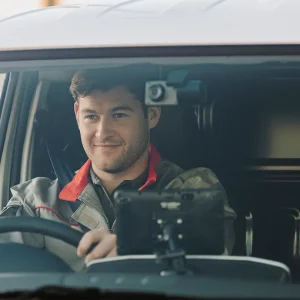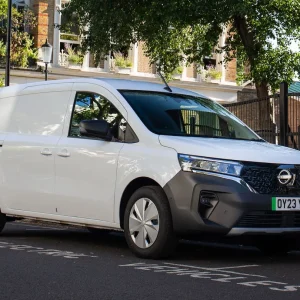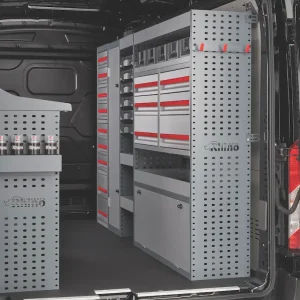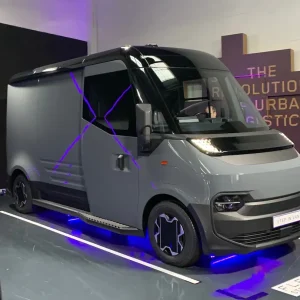The previous-generation Renault Trafic and its Vauxhall-badged equivalent, the Vivaro, caused a stirwhen they appeared in 2001 due to their striking looks, which showed that panel vans could embody style without sacrificing practicality.
Their successors continue to marry aesthetic appeal with functionality as well as introducing innovative features and dynamic new engines.
Vauxhall and Renault both employ the family faces already seen on various passenger car models, and boast bold front grilles with their respective brand badges prominently displayed. The UK-built Vivaro, produced in Luton, sports new black and chrome headlamps as well as the blade feature side design familiar from the Insignia and astra car line-ups. daytime running lights are equipped with LED technology.
Anyone familiar with the Clio, Captur and revised Megane passenger car models will recognise the Renault van’s family resemblance a pair of Renault-developed bi-turbo 1.6-litre diesel engines mean the Trafic and Vivaro set new levels of efficiency in medium vans. The pair are up for grabs with a choice of four engines. The 1.6-litre dci 90 and dci 115 Renault units are joined by two new twin-turbo drivetrains: the 1.6 energy dci 120 and 140 engines.
The powertrains deliver fuel economy gains of at least 5mpg across the range compared
with the current single-turbo drivetrains, with the newly developed twin-turbos being the most efficient.
Downsizing the engine capacity means the two lower-powered engines are more efficient than their predecessors, with an official figure of 43.5mpg being a 2.6mpg improvement over the 2.0-litre 90 or 115hp diesels previously used.
The 120hp bi-turbo engine is the most efficient of the line-up, with an official fuel economy figure of 47.9mpg.
High-roofed versions of the Renault and Vauxhall light commercials will arrive during 2015, but when the full line-up is available load volumes will cover a broad range from 5.2–8.6m3, which means the latest derivatives deliver more carrying space than their predecessors, while payload capacities extend from nearly 1100kg to a meaty 1250kg.
A cavernous 54-litre stowage space is located beneath the passenger seats in both vans, while the pull-down desk in the middle seat means the cabin can serve as a mobile office. It contains a compartment for a laptop and a cup holder.
The innovative Wide View Mirror in the passenger sun visor is an ingenious feature and works well in busy city environments, once you find its best position – dramatically helping to increase the driver’s angle of vision to the rear.
Another useful addition on the new models is a load- through facility, accessed by lifting a hatch at the bottom of the passenger seat. It offers a potential total length of 3750mm.
The Trafic is available in three trims: Business, Business+ and Sport while the Vivaro comes in two: Base and Sportive.
Having driven both models in a variety of specifications and power outputs we can testify to their all-round competence and the high quality of their ride, handling and in particular refinement.
Did you know?
The two sister vans were the main attractions at the 2014 cV Show and the main differentiator between them is the front-end styling.
Highly Commended
Highly commended this year is the middleweight that captured the overall Van of the Year award in both 2013 and 2014, Ford’s outstanding Transit Custom. When it arrived towards the end of 2012 it epitomised the excellence of the blue oval brand’s renewed LCV line-up. Not only did the Custom set a new benchmark for quality in its sector it also undoubtedly inspired competitors to raise the standard of their subsequent new products. With its interior quality, peerless driveability, innovation and styling, the Custom can truly claim to be a game changer in the light commercial sector as a whole.





